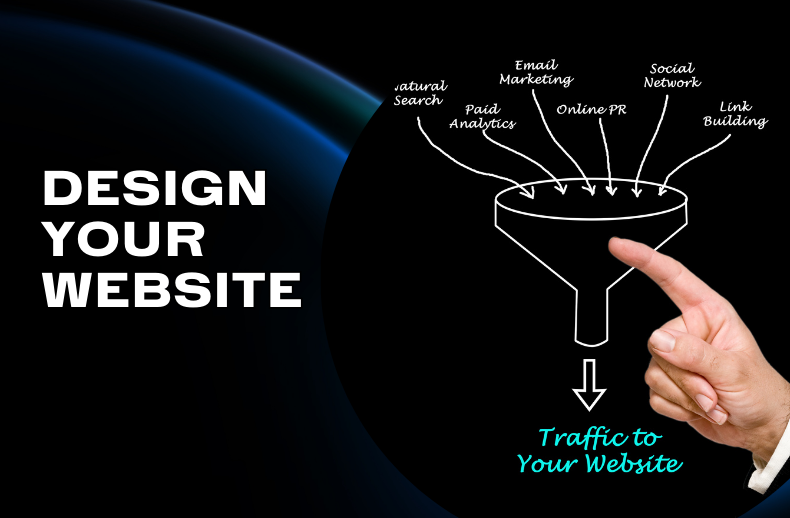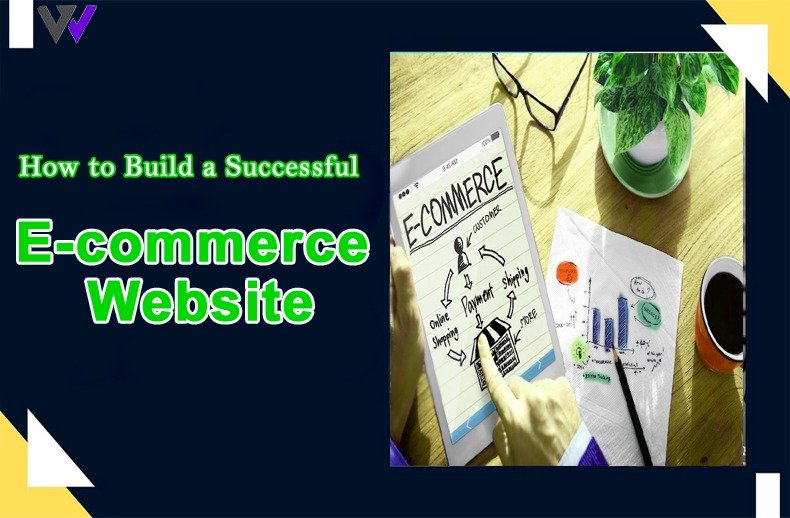An E-commerce website allows you to reach out to potential customers outside your area, build a loyal customer base, and ultimately increase your business’s revenue. Building and maintaining an effective e-commerce website is crucial to succeeding in the digital age. The platform is growing rapidly and becoming more popular day by day. Customers increasingly expect businesses to have a well-functioning website they can visit and purchase, with digital technologies becoming ubiquitous. In this article, we will discuss how to build a successful E-commerce website.
What is E-commerce?
E-commerce (Electronic Commerce) is the buying and selling of goods or services over an electronic medium such as the Internet. It is also known as online shopping and covers everything from ordering food, booking tickets, and making payments to conducting financial trades. It includes buying and selling products over the Internet, exchanging data and funds electronically, providing electronic communication services such as webcasts, and managing supply chain activities.
Why Do Businesses Need an E-commerce Website?
The business owner can now sell their product over the internet to allow people to buy it from home. It helps remove geographical boundaries and brings convenience to the customer. An E-commerce website also increases potential markets, allowing businesses to sell products to customers outside their geographic area.
It also enhances the customer experience by providing an easy way to shop and pay for items and providing access to product information and reviews. Online stores often offer discounts or special offers, which can benefit shoppers. It also allows businesses to cut costs by eliminating the need for physical stores and providing products that customers can purchase conveniently.
Building Your E-commerce Website
Research Your Target Audience:
The target audience is your future customer who will buy the products, and having correct information is beneficial. Research the nature of the audience, what they like and what is trending now. Knowing who you are selling to will determine the platform type and features you should use. You need to understand their needs, wants and what motivates them when shopping online. It is crucial to create a website that meets the customer’s needs.
Select an E-commerce Platform
Many options are available, from basic, low-cost platforms to more complex and expensive ones. You must consider your budget, the features you need, and the ease of use. Choosing a reliable and secure platform is important, as this will be essential for your customers’ trust in your website.
E-commerce Platforms:
Open Source:
Most popular open-source platforms include Magento, Drupal, OpenCart and PrestaShop. You can use these to personalize the appearance and functionality of your website. It’s essential to understand the complexities of these platforms before selecting one.
SaaS platform:
It is a cloud-based software solution that requires no technical setup or hosting. Examples include Shopify, BigCommerce, 3dcart and Volusion. These platforms have basic templates you can customize for your website with tools for creating product pages, managing orders and tracking analytics.
Hosted Solutions
- Shopify
- Magento
- BigCommerce
- Wix
- WooCommerce
They provide an accessible platform with a range of features and plug-ins. They are often cheaper than open-source platforms but have fewer customization options.
Buy a Domain:
Your domain name is the URL that customers will type in the address bar of their web browser to visit your website. You can buy a domain directly from a registrar or web hosting provider. A unique and memorable domain name reflects your brand and is easy to remember. It’s also essential to have a secure domain name and an SSL certificate to protect your customers’ data when purchasing.
Design Your Website

Design your website according to your products and target audience. This includes creating a logo, choosing colors and fonts that reflect your brand, designing product pages and setting up payment options. A properly designed website makes a huge impact on customers and helps in increasing traffic. It is up to you to design a website with an easy customer interface and attract more customers. It should be optimized for mobile devices so that customers can easily shop on the go.
Add Products and Pricing
A visually appealing catalog that’s easy to navigate captures your customers’ attention and makes them want to buy your products. To create a standout catalog, focus on using high-quality images, clear headers and sub-headers, and a layout that’s easy to understand. You’ll also need to set up product details, pricing tiers, and other variables like product variations.
Set up Payment Options
Set an easy payment option so customers can pay for their purchases quickly and securely. This is a crucial step for the website to add a payment option according to your product. This includes integrating with popular payment gateways and credit card processors. You must also offer customers multiple payment options, such as cash on delivery and debit/credit card payments.
Shipping Options
As for shipping, you’ll want to research the different carriers and determine which ones offer the best rates and services for your business. Some e-commerce website builders offer standard shipping options along with payment options. Some platforms even provide additional features, such as printing shipping labels and arranging for door-to-door delivery or in-store pickup. You also need to set up your shipping options and ensure that prices are accurate and that customers understand the different delivery times.
SEO Techniques
Search engine optimization (SEO) is a must for any e-commerce website, as it helps your site rank higher on search engines and drives more visitors to your store. SEO involves optimizing the website content and structure, creating backlinks, submitting your site to web directories, and improving page loading speed. It’s essential to use keywords throughout your website and to have a good site architecture with clear headings and easy-to-navigate pages. By utilizing these techniques effectively, you can maximize your online visibility and success in the digital arena.
Conclusion:
Building an E-commerce website is beneficial for organizations to sell products online. We have provided the full detail in this article to build a website. It is essential to research the different platforms and evaluate their features, pricing, and customer support. It’s also crucial to consider your business needs when choosing the right platform. Make sure to design your website with an easy customer interface, add products and pricing tiers, integrate payment options, configure shipping options, and utilize SEO techniques for maximum visibility.

